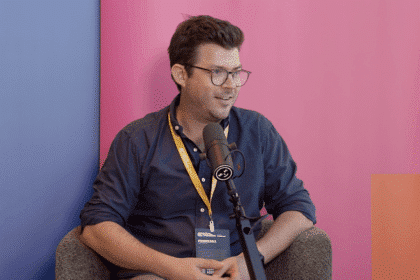In this guest post, one of Aussie adland’s most respected voices, the now retired John ‘Steady’ Steedman, confronts the industry’s serious and ongoing issues around ageism…
In a powerful moment during his MFA Hall of Fame induction speech, Greg Graham, also known as ‘Sparrow’, vowed to combat ageism later founding the Experience Advocacy Taskforce (EAT), whose vision is to make ageism a non-issue for the next generation. Recently, EAT unveiled unsettling statistics about media professionals under 40 and their alarming plans to exit the industry before reaching 40, with an average tenure of just three years. The question looms: Why?
The media industry is in a constant state of evolution and demands diversity and inclusivity. Yet, ageism persists, silently sidelining experienced professionals and stifling the industry’s potential. As Australia’s media landscape evolves, it’s time to confront ageism head-on and implement transformative measures.
Recognising the inherent value that comes with experience is the initial step toward dismantling ageist attitudes. Clients actively seek experienced individuals, and the window for making impactful contributions extends well into one’s 60s. Shockingly, only 18.5 per cent of the media agency workforce is over 40, lagging far behind the Australian workforce average of 62 per cent, with a mere five per cent over 50. If unaddressed, the trend poses the risk of marginalisation through increased in-housing. Media owners will gain the upper-hand with client relations, resulting in a lack of channel selection impartiality.
Action is imperative. The media industry must invest vigorously in mentorship programs bridging the generational gap, fostering a powerful relationship where wisdom meets innovation.
Comprehensive diversity and inclusion training is crucial to address unconscious biases and stereotypes, fostering cultures that value individuals based on skills and contributions rather than age-related preconceptions. Leadership roles within media organisations should reflect a more diverse age demographic, with boards and executive teams actively seeking experienced professionals older than 40.
The industry must reevaluate its recruitment practices. Age should never be a limiting factor when assessing a candidate’s suitability for a role. Implementing blind recruitment strategies can help eradicate age-related biases in the hiring process.
Lifelong learning opportunities must be a priority for all professionals. Continuous skill development is vital in the rapidly evolving media landscape, benefiting not only individuals but also contributing to a workforce that remains dynamic and adaptable, irrespective of age.
The industry must commit to dismantling age-based discrimination and fostering an inclusive culture that values the wisdom and experience of individuals. Hopefully, this will result in retaining more over 40’s than is currently the case and consequently a brighter future for media agencies.
For those in their 40s working in the industry, your skill sets are invaluable. Whether as a CEO, client, division, or channel lead, the opportunities are boundless. Leadership is a collective effort, as exemplified by my experience as a CEO into my late sixties, surrounded by respected leaders over 40, valued by clients and media owners alike.
The under 40s also have a strong role to play in the future of the media agency business. They, probably more than any other group, are capable of reshaping perceptions and dispelling negative views about being in the industry past 50.
The Australian media industry stands at a crossroads, where addressing ageism is not just a moral imperative but a strategic necessity.
By dismantling age-related biases, fostering inclusivity, and celebrating the diversity of talent, the industry can unlock its full potential. It’s time for a paradigm shift that embraces the richness of experience and cultivates a media landscape thriving on the collective wisdom of professionals across all age groups. The journey toward an age-inclusive media industry starts with a commitment to change, and the time for that commitment is now.
Age has everything to do with it, and embracing it will lead to a stronger, more innovative, and sustainable future for the Australian media industry.
Hopefully, this will also result in retaining more over 40’s than is currently the case and consequently, a brighter future for media agencies.








